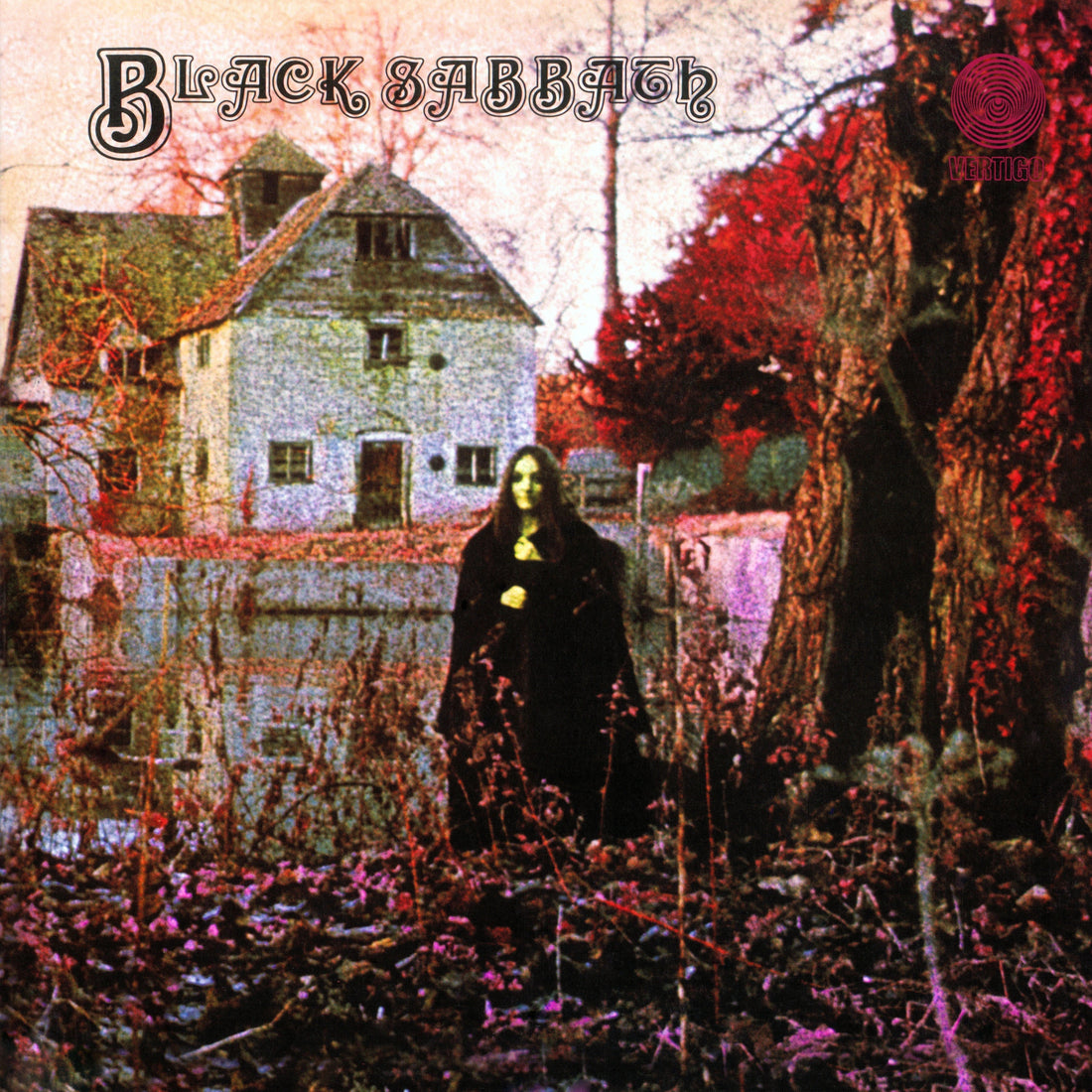
The Birth of Metal Drenched in Dread, Blues, and Doom
Black Sabbath’s debut album didn’t just introduce a new band—it sparked a genre. Released in 1970, Black Sabbath is widely credited as the first true heavy metal album, and over fifty years later, its eerie atmosphere, thunderous riffs, and brooding sense of darkness remain unparalleled. The record is a raw yet visionary blend of blues-based rock, psychedelic experimentation, and unrelenting heaviness, held together by a sinister mood that casts a long, unshakable shadow.
From the opening storm sounds and church bells, the album plunges you into a world of dread and desolation. The guitar riffs crawl in like black smoke—slow, deliberate, and thick with doom. It’s music that doesn’t try to scare you with speed or violence, but with space, restraint, and the uncanny weight of what isn’t said. Tony Iommi’s guitar work—already iconic here—feels ancient and arcane, channeling blues with a sense of cursed precision, especially when the tempo ramps up and the solos unravel with reverb-heavy wails. His ability to swing between ghostly one-note chugs and frenzied blues leads is the album’s backbone.
What makes Black Sabbath so effective is its sense of pacing. The band understands the power of a slow build, letting songs simmer with tension before exploding into chaos. That push and pull, between dirge and fury, between the ritualistic and the reckless, is what sets this album apart. Even on more upbeat moments—like the harmonica-drenched romp that nods to southern blues or the catchy, almost funky grooves that surface mid-record—there’s always a hint of menace lurking beneath.
Geezer Butler’s bass playing is deep, distorted, and foundational, often leading the way during transitions or setting up a shift in dynamics. His tone is dense and full of movement, especially when he’s given space to ride a riff or kick off a jam. Bill Ward’s drumming, meanwhile, is surprisingly expressive—both chaotic and tightly measured. He fills the quieter moments with subtle cymbal work and unleashes rapid rolls and aggressive fills when the songs demand a jolt of adrenaline. The use of unusual percussive elements, like tambourines and distant-sounding bells, adds a textural richness that expands the album’s sonic palette.
Ozzy Osbourne’s vocals are what tie it all together. He sounds distant yet present, like a prophet delivering omens from the edge of some unknowable void. His voice is clear but eerie, almost detached at times, and when paired with lyrics about Lucifer, isolation, or personal betrayal, it takes on a chilling weight. Songs about being lured into darkness or reflecting on spiritual warfare feel especially bold for the time, and Osbourne walks that line between theatrical and sincere better than anyone else could.
There’s an unmistakable sense of experimentation throughout the album. Whether it’s psychedelic flourishes, abrupt tempo shifts, or extended blues-rock improvisations, Sabbath shows their musical range without losing cohesion. Longform tracks stretch out into wild, jam-like sections, where each member gets room to show off technical chops without breaking the album’s ominous spell. The psychedelic soloing, the dark melodic structures, and the interwoven sense of melody and heaviness foreshadow the future of both doom and stoner rock.
Yet even when Sabbath channels groove and energy—like on tracks with funk-infused bass lines or galloping blues riffs—the sense of weight remains. Every song feels grounded in something ancient and dangerous, like they’ve tapped into a primal musical force that was waiting to be uncovered.
Black Sabbath is more than the sum of its parts. It’s not just the riffs, or the eerie production, or the dark lyrics—it’s the atmosphere. The record casts a long shadow not only over metal, but over rock itself. It sounds like the moment the light went out and something unholy crept in. And it’s never quite left since.
RATING: 8.5/10
NOTABLE TRACKS:
Black Sabbath
The Waizard
N.I.B.

